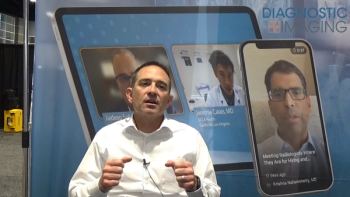Radiology Recredentialing: Who is Being Served?
Seemingly over the top efforts for recredentialing of radiologists may have an adverse impact on a facility’s retention and recruitment.
I have written before about the peculiarities of credentialing. All of us who have gone through the process understand the rationale behind it. You can’t just accept “Trust me, I’m a doctor and have no skeletons in my closet” as a basis to take someone into your health-care ranks. Due diligence is, well, due.
However, the more one experiences it, the more one is likely to notice an imbalance between resources invested in credentialing versus what is gained from that time and trouble. An alien seeing us do this stuff might come away with the impression that we consider filing cabinets to be our gods, entities that must be satisfied by endless feedings of paper covered by petty little details that nobody will ever need to consult.
Having worked in a few different places, I have seen that credentialing is one of the first indicators as to whether I chose well in taking a job. Some places make it an effortless breeze, confirming that I joined an efficient, well-oiled machine that prioritizes not hassling me. Others make it seem like they are trying to punish me for having come on board, making every tidbit of information they “need” into a dental extraction.
The place where I am now was a good example of the former. They gathered the usual deets from me, and almost never asked for anything again. Anytime they plugged me into a facility for which I would be reading, they shared whatever files they needed to with that facility’s credentialing people on my behalf. I would get documents to review and digitally sign once in a while, but that was it.
A sudden, jarring change came this year when a subset of my facilities started demanding everything from scratch. It didn’t take too long for me to start asking questions: Don’t you already have all of this on file from when I re-credentialed last year? If not, why aren’t you reaching out to my telerad company’s HQ? I don’t have any of this stuff at my fingertips, and it will take a lot longer for me to dredge it all up again. Isn’t my time worth more to you if I spend it reading scans?
Their attitude was, shall we say, less than apologetic, let alone accommodating. You must comply, and we’re not going to do anything to make this easier on you. They didn’t call me a peasant, although that wouldn’t have been a complete surprise in light of their tone.
Finally, when their umpteenth demand regarded a job I had held in summers between semesters of undergraduate college — something nobody else had ever asked about — I reached out to the other rads in the group. Is it just me, or is this year’s recredentialing wildly, obnoxiously different?
The response: Yes, the facilities in question have contracted with a new outside agency for this recredentialing. Physicians “throughout the system” have been complaining.
I have had similar feelings in other circumstances, especially when trying to make my way in the bureaucratic mess of our health-care system, but rarely so strongly. Who exactly is this credentialing firm working for?
The common sense answer would seem to be the hospitals that hired the firm and are paying it. By one step removed, that would also mean the physicians working for the hospitals. These facilities don’t just conjure dollars out of thin air to pay the firm. Ultimately, the docs keeping these places running are keeping revenue streams flowing, including the firm’s fees.
However, the way things tumble, the firm is doing the opposite. It is working against the docs. By extension, the hospital that wants to keep docs in good standing to keep doing their work. At the very least, it is wasting the docs’ time and energy. Draining their morale doesn’t do the hospitals and patients any good. Combined with other dissatisfactions, it might just be enough to push some staff over the line of “That’s it. I’m getting out of this dump.”
I have written in the past about the concept of “malicious compliance.” You have surely encountered it at some point: Someone intentionally follows rules to the point of harming or at least vexing coworkers and customers. It is a relatively safe way of acting out, because if anyone calls you on it, you are technically just doing what you were supposed to do.
In an outfit like this credentialing firm, if just one or two disgruntled employees maliciously comply with the rules — maybe they decided that doctors need to be taken down a few pegs for instance — it wouldn’t be all that big a deal. Complaints would come in and some managerial type would notice that all the complaints seem to involve the malicious paper pushers (whose credentialing files never seem to be satisfied). The manager would then either straighten the grumps out or fire them.
On the other hand, when complaints are across the board and they result in no corrective action, the rot is closer to the root of the tree. It is time for whoever at the hospital decided to hire this particular firm to un-hire it or at least threaten to do so. Someone in the firm might then make the necessary heads roll.
It is a good habit to periodically think about “who’s being served” by any aspect of one’s operations. Asking the question can reveal all sorts of inefficiencies and self-defeating elements. Anybody who tries squelching such questions is a prime candidate for scrutiny, probably far more in need of explaining him or herself than a bunch of docs who just want to keep on doing the good work they have been producing for years.
Newsletter
Stay at the forefront of radiology with the Diagnostic Imaging newsletter, delivering the latest news, clinical insights, and imaging advancements for today’s radiologists.





























